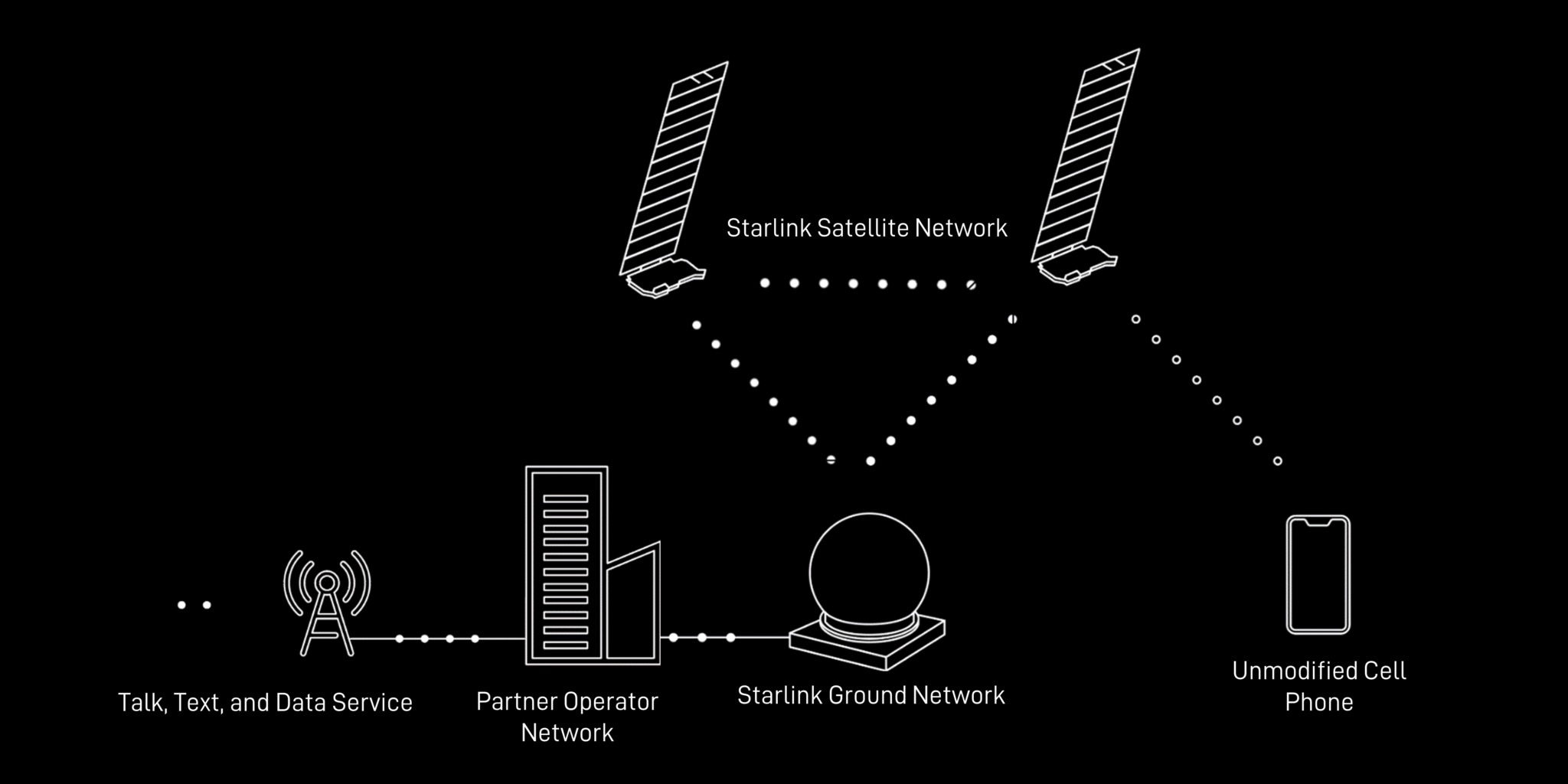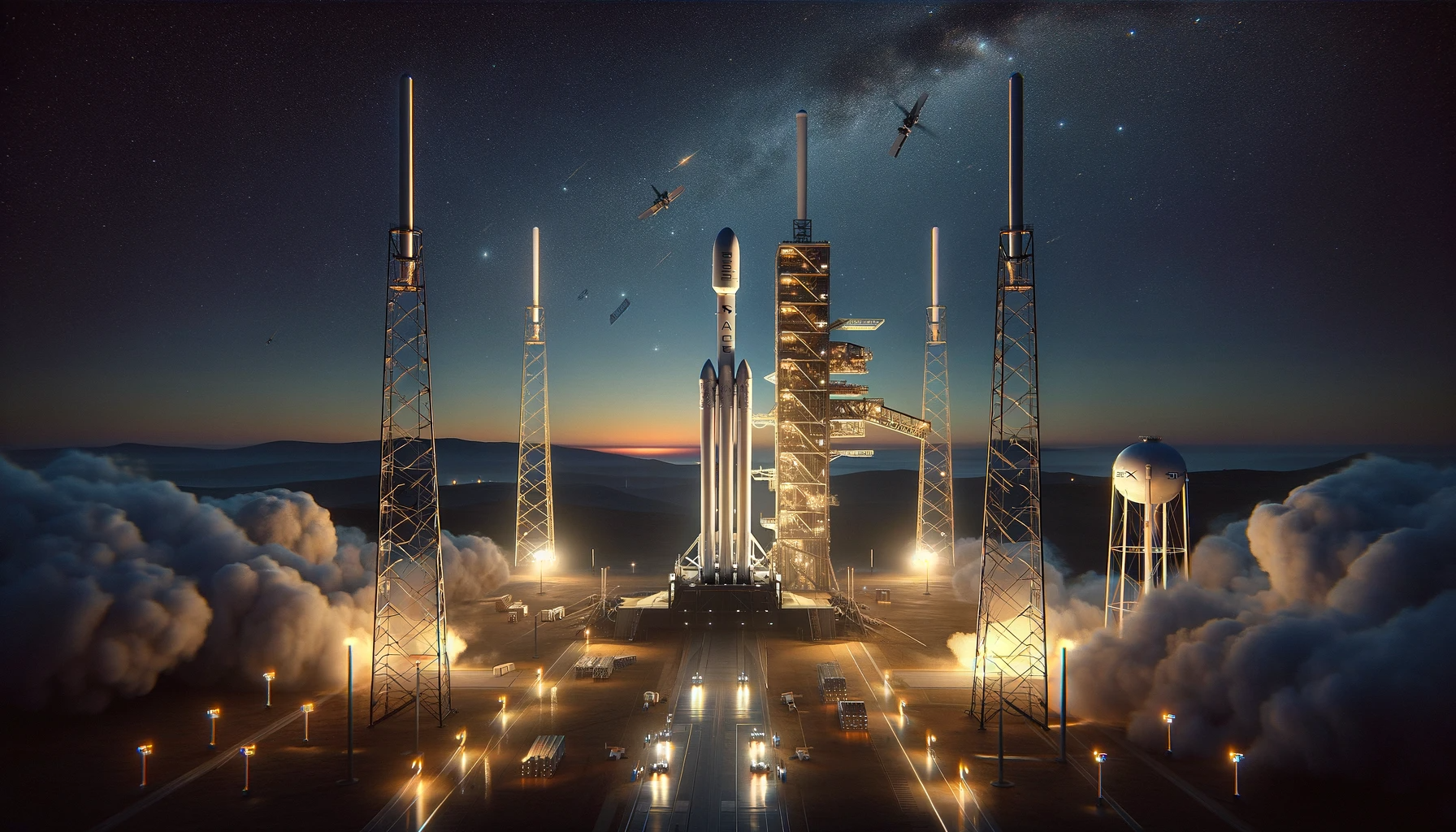SpaceX has postponed the launch of its first Starlink satellites with direct-to-cell capability, initially scheduled for last week, to December 28 at 9:09 p.m. PST. You can sign up to watch this launch live here https://www.youtube.com/watch?v=7WGTDdOVJy0 This launch is part of the Starlink 7-9 mission from Vandenberg Space Force Base, involving the deployment of the first six satellites equipped with this groundbreaking technology. However, the delay comes amidst a growing outcry over concerns related to radiofrequency (RF) electromagnetic fields and public health.
The Promise of Direct-to-Cell Technology
This mission is a significant leap for SpaceX, introducing direct-to-cell capabilities that promise seamless global access to texting, calling, and browsing in remote areas. Elon Musk has championed this advancement as a major breakthrough in maintaining connectivity, even in the most inaccessible parts of the world.
Rising Safety Concerns
Despite the technological promise, there has been an increasing chorus of voices urging caution. Critics point to the recent court decision against the FCC, which highlighted the outdated nature of current RF safety guidelines. These guidelines, over a quarter-century old, are argued to be inadequate in addressing the long-term, low-level exposure to RF electromagnetic radiation from such technologies.
The Science Behind the Concerns
Recent studies have raised questions about the potential health effects of RF radiation. The debate is not solely about the intensity of the radiation but also involves considerations of frequency, modulation, and potential non-thermal biological impacts. For instance, findings from the National Toxicology Program and other studies indicate non-linear relationships between RF exposure and health effects, challenging the traditional understanding of RF radiation safety.
Expert Perspectives
John Coates, an RF Safe Brand Ambassador with a background in RF, and a patented inventor of novel wireless technologies has voiced strong concerns. Coates, who has personal and professional experience in this field, argues that lower power does not necessarily equate to safety. He emphasizes the importance of understanding the complex interactions of frequency, modulation, and biological effects in assessing the safety of RF radiation.
Public Response and Regulatory Action
In response to these concerns, several towns in Massachusetts have paused the expansion of 5G technology, demanding a thorough and independent review of its safety. This movement reflects a broader public demand for a more comprehensive understanding of RF-EMF exposure and its implications on health.
Balancing Progress and Caution
The debate over SpaceX’s Starlink satellites with direct-to-cell technology encapsulates a broader tension between technological innovation and public health concerns. While the potential benefits of such technologies are immense, especially in terms of global connectivity, the call for a postponement until the FCC updates its safety guidelines reflects a prudent approach to public health in the face of emerging technologies.
As SpaceX reschedules its launch, the conversation around RF radiation safety continues to evolve. The need for a balanced approach that considers both technological advancement and health implications has never been more evident. It’s crucial for regulatory bodies, scientists, and the public to engage in informed discussions, ensuring that technological progress does not compromise health and safety.
References
- SpaceX Starlink Mission Updates
- Court Decision Against the FCC on RF Safety Guidelines
- Studies on RF Radiation and Health Effects
- Public Response to 5G Expansion and RF Safety Concerns
- John Coates’ Perspectives on RF Radiation Safety
The unfolding story of SpaceX’s delayed launch and the surrounding safety concerns offers a vivid example of how technological advancements must be aligned with responsible and informed public health policies.
About Direct-to-cell aka, Cell Towers In Space!

This direct-to-cell promise for the Starlink network is the beginning of a promise announced by SpaceX founder Elon Musk during an event in August 2022 with T-Mobile CEO and President Mike Sievert at Starbase in Texas.
Musk described the capability as a “massive game changer” that would eliminate dead zones in even the most remote parts of the world.
“This really is a big deal,” Musk said during the presentation. “Even if an entire region or country lost connectivity because of a severe hurricane or floods or fires or tornados, earthquakes… even if all the cell towers were taken out, your phone would still work.”
According to a Nov. 30, 2023, email sent to Kathyrn Medley, the acting division chief of the Federal Communication’s (FCC) Satellite Licensing Division, SpaceX anticipates launching “approximately 840 direct-to-cell capable satellites over the next 6 months, with additional launches continuing after that period.”
Jameson Dempsey, SpaceX’s director of satellite policy and the author of the email, wrote that the planned and future launches would “ensure that we can launch a critical mass of satellites in time to deliver commercial service later in 2024.”
“As such, while we understand that the Commission may limit our experimental authority to the satellites we expect to launch and test the next 6 months, we request that the launch license include authority for all 7500 satellites in our direct-to-cell modification application,” Dempsey wrote.
Sievert noted during the August 2022 event that the upcoming service in the U.S. would use the existing T-Mobile mid-band PCS spectrum.
“That allows us to then dedicate that, working together, to the constellation that Starlink operates so that we are seeing those satellites from every corner of the country,” Sievert said. “If you have a clear view of the sky, our vision is you’re connected.”
“Your phone doesn’t know it’s connecting to space. It will scan for its home network, it’ll scan for terrestrial roaming partners as well,” Sievert added. “And if it fails to see those things, it will scan again and it will connect to the authorized connection from the satellite and it’ll think it’s connected to a cell tower because that phone is using industry-standard technology communication protocols and it has the spectrum already built in. At least, the vast majority of phones in circulation today do.”
In addition to T-Mobile as a U.S. service provider, SpaceX said it has partnered with companies in Australia, Canada, Japan, New Zealand, and Switzerland.
Originally, the plan was to launch the service using the Starlink V2 satellites, which may still end up hosting the majority of the on-orbit antennas. However, because of their size, they would need to launch using Starship.
Musk said during last year’s event that the antenna would be about five or six meters on one side or roughly 25 square meters. He noted that the Starlink V2 Mini satellites would need to work as a holdover solution if Starship were “delayed longer than expected,” which turned out to be the case.
The six direct-to-cell satellites along with the 15 regular Starlink V2 Minis will launch aboard a Falcon 9 rocket with a brand new first stage booster. Following stage separation, the booster will land on the droneship, “Of Course I Still Love You” out in the Pacific Ocean.
- Postponing Starlink Next-Gen Satellite-to-Cell Services Until FCC Updates Safety Guidelines
- Urgent Need to Reallocate SpaceX Funds for Research on Health Effects of Next-Gen Startlink Wireless Technologies
- Landmark Legal Victory Against the FCC: Protecting Public Health from Wireless Radiation
- The December 10th Starlink Test: A Human Experimentation Paralleling NTP and RI Rat Studies
What are the plans for the deployment of these satellites?
SpaceX plans to deploy approximately 840 direct-to-cell capable satellites over the next six months, aiming for a total of 7,500 satellites to support the network.
Why has SpaceX delayed the launch of its Starlink satellites with direct-to-cell capability?
SpaceX postponed the launch, originally scheduled for December 2023, to December 28 at 9:09 p.m. PST. The delay is primarily due to technical and operational considerations, common in complex space missions.
What are the direct-to-cell capabilities of these Starlink satellites?
The direct-to-cell technology in these satellites enables mobile network operators globally to provide seamless access to texting, calling, and browsing in remote and traditionally underserved areas.
What concerns have been raised about the Starlink direct-to-cell service?
Concerns have been raised about the potential health effects of RF electromagnetic radiation from the satellites. Critics argue that current RF safety guidelines, which are over 25 years old, may not adequately address long-term, low-level exposure.
What was the court decision against the FCC, and how does it relate?
A recent court decision highlighted the FCC’s failure to review scientific evidence on the safety of RF radiation. This has led to calls for updated safety guidelines that reflect current scientific understanding.
Are there any health studies supporting these concerns?
Yes, studies like those from the National Toxicology Program have shown non-linear dose-response relationships between RF exposure and health effects, suggesting that even low levels of RF radiation could be harmful.
How will this technology change mobile communications?
This technology promises to revolutionize mobile communications by providing reliable connectivity in remote areas and during natural disasters when traditional cell towers might be inoperative.
What is the public response to the deployment of these satellites?
While there is excitement about the technological advancements, there’s also a public demand for a more comprehensive understanding and reassessment of RF safety guidelines.
What is SpaceX’s response to these safety concerns?
SpaceX has not publicly addressed these specific safety concerns in detail but continues to work closely with regulatory bodies to ensure compliance with existing safety standards. The company remains focused on the technical aspects of the mission’s success.








